Lammas
Here are Graham's thoughts:
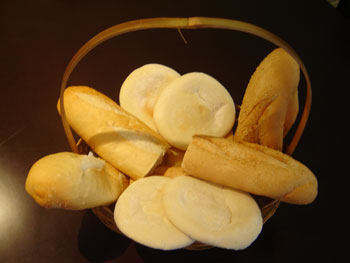 Lammas is another one of the less well known festivals, a trait it shares with Imbolc, which is opposite Lammas on the Wheel. It is usually thought of as being on the first of August, but can also be celebrated any time between the 31st of July and the 2nd of August. The word Lammas comes from the Saxon words for Loaf Mass, hinting at the broad message of this festival - it is the blessing of the first loaf, the beginning of the harvest of cereal crops. Traditionally the first wheat would have been cut at dawn, then winnowed and ground so that a symbolic first loaf could be baked and shared among the community that evening. It is interesting how resonant the idea of breaking and sharing bread is in binding people together.
Lammas is another one of the less well known festivals, a trait it shares with Imbolc, which is opposite Lammas on the Wheel. It is usually thought of as being on the first of August, but can also be celebrated any time between the 31st of July and the 2nd of August. The word Lammas comes from the Saxon words for Loaf Mass, hinting at the broad message of this festival - it is the blessing of the first loaf, the beginning of the harvest of cereal crops. Traditionally the first wheat would have been cut at dawn, then winnowed and ground so that a symbolic first loaf could be baked and shared among the community that evening. It is interesting how resonant the idea of breaking and sharing bread is in binding people together.
As well as having a range of dates, this festival also has an alternative name, Lughnasedh, or Lughnasa (pronounced “Loo-na-seth” or “Loo-na-sa”). In Celtic mythology, the month of August was sacred to Lugh, the God of Light, and the name is prevalent in Ireland. While it shares a lot of symbolism with Lammas there is much academic debate as to whether there was a common, pan-Celtic early August festival. It is probable that there was a general early August celebration of the first harvest across the ancient world. It was called Lughnasedh in Ireland and Lammas in Anglo Saxon lands.
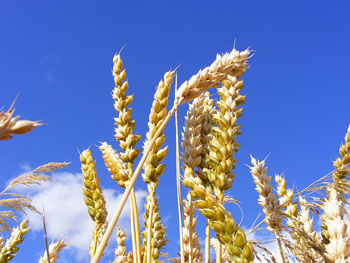 All that aside, this festival is a celebration of first fruits. It is the beginning of the harvest. This would have been the time of maximum effort and hard work in any rural community, and was of vital importance. The work put in at Lammas, in gathering and storing the harvest, would determine the survival or otherwise of the community. It is no surprise then that many of the rituals involve bringing everyone together, symbolically gathering the first of the harvest and blessing the barns for storage.
All that aside, this festival is a celebration of first fruits. It is the beginning of the harvest. This would have been the time of maximum effort and hard work in any rural community, and was of vital importance. The work put in at Lammas, in gathering and storing the harvest, would determine the survival or otherwise of the community. It is no surprise then that many of the rituals involve bringing everyone together, symbolically gathering the first of the harvest and blessing the barns for storage.
One theme that appears to have been common across both Ireland and Great Britain is the importance of hills to this festival. There have been many references to climbing the highest hill in an area and then enacting some sort of ritual there. Given that standing stones and barrows were often placed on the sky-line, there may have been some sort of ritual pilgrimage to these ancient, sacred places at this time of year.
Certainly, it would be a good exercise to climb the highest hill at the beginning of August and survey the land around. (Make sure to take plenty of water!) There may have been practical reasons for this as well – being able to see all the corn fields spread out would have been a valuable tool in planning the harvest.
The fact that Lammas means Loaf-Mass tells us that it comes from the early, Anglo-Saxon Christianity. With distinctly pagan overtones it involved blessing the first harvest in the local church. It has gradually been falling out of favour, being superseded by the later Harvest Festival. This is usually at the end of September and is a celebration of the harvest being brought in.
Although I have written a lot about the God, this is also a Goddess based festival. It is through the Goddess that we have the bounty of harvest. Indeed, this day is Lugh's day because it was when he had a feast in honour of his foster-mother's funeral. (This is also the origin of the name, Lughnasa or Lughnasedh). This hints at a darker side to this time of year. 15th August is the time when the Virgin Mary ascended to heaven. I think this is an old memory involving the death of the corn maiden. Although we are enjoying the bounty of this time of year, the harvest is a process of killing the plants in order to get food. As with everything though, it is cyclical and tidal and the Gods are always reborn.
If you are working the wheel of the year with an intent, this is the time when you start to reap the rewards. It is a time of gathering in energy. In essence, taking a long view, it is looking ahead to autumn and making the first preparations for winter. A good ritual activity is to bake bread and then share it with friends and family. Cooking can be treated like magic, and this is a good time to do so. Make an effort to find heritage flour and maybe experiment with new recipes. This time of year applies to all cereal crops, so cooking with barley, corn or oats is equally valid.
In fact, there is a Scottish tradition of Bannock Cakes that are cooked differently on the four cross-quarter days. They are large, round unleavened oat cakes, often marked with a cross-quartered circle. The Lammas Bannock is made with the first grains harvested.

Another good food for this time of year is salmon. These fish were important to the Celts and symbolised wisdom. They were also particularly associated with Lugh. This is one time of year where it's especially significant to try to assemble a meal from only local ingredients, to honour the harvest.
Colours are usually corn yellows and flowers can be a corn or wild grass arrangement, with other field and meadow flowers like poppies.
This is a time to celebrate the harvest, to give thanks to the Gods for the Summer that ripens and makes everything grow, to start gathering in, collecting and giving thanks for the harvest.
And here are Jan's thoughts:
The tradition I follow has a somewhat different flavour to Lammas than does the regular approach, although it does share much with the traditional concepts of the festival. For us this ceremony signals both the start of a crucial triad of workings, and the conclusion of another triad, started much earlier in the year.
We have already “sacrificed” the High Priest as an indication of the loss of the God – he does take this in remarkably good humour every year, I have to say. And it is on this day that the Goddess brings him back to us and re-awakens him.
However, for us, this working is the acknowledgement of an inevitable and annual tragedy in which we lose the touch of the Goddess for a time. So it is always tinged with melancholy, despite its celebratory theme. Here we encapsulate both life and death – triumphant return and crushing loss.
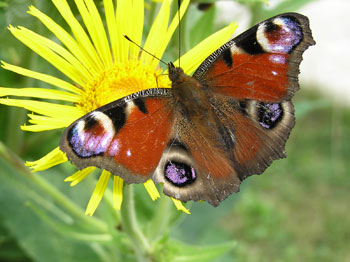
All symbols of rebirth are essential during this ceremony – butterflies, the ouroboros, the lotus (we use a lotus wand during this ceremony), the cycle between day and night (we work at sunrise or sunset as much as we are able), the scarab.
Considered in isolation, our Lammas is also about welcoming the abundance and fertility gifted to us by the Goddess as She moves through her natural cycle. The essence of promise is perhaps more emphasised for us – we know She will return in total splendour, and we acknowledge with deep gratitude all she has thus far offered us. But we know that She must retreat to renew Herself, as has the God, so that when They return, they do so prepared to stand united as They host the bounty of the Autumnal.
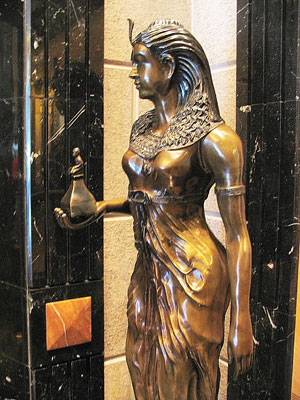
For us, this is our last chance for a while to give thanks and bathe in Her love and light. But each of us recognises there is an empty and oddly lonely time approaching. This is a period where we must walk alone, without the gentle and reassuring touch of the Lady. You’d be very surprised to learn the varying experience we have during this time. I, for example, have managed to plunge into a deep depression that knew no solace until the following Moon. Fortunately, over the years, I have learned to temper my distress…..but that was not a pleasant experience.
You know, for our ancestors (at least here in the Northern hemisphere) this was always a completely crucial period. It gave them their first opportunity to assess how bountiful might be the coming harvest. Myth and symbol abound across so many cultures about this time in the year, reflecting the life or death nature of this period immediately preceding harvest. The concept of loss and sacrifice is not at all uncommon across many myths.
The Roman goddess, Ceres, mislaid her daughter, Prosperine - she searched frantically across a hot summer, but her daughter was nowhere to be found. It turns out that Pluto had run away with her. Greek Demeter also lost Persephone who – variously, depending on which tale you decide to depend upon – was kidnapped by Hades as his unwilling bride, or alternately took pity on the dark dwellers of the Underworld and descended there to shed light through darkness; and with a slightly different twist the Mesopotamian Goddess, Ishtar, misplaced her lover, Tammuz. The two joint themes here are that in all cases the missing person ended up in the Underworld, and needed, one way or another to be freed, and that all grains ceased to grow during the period of loss.
These recurrent themes surrounding the success or failure of the harvest reflected the importance and necessity of grain to see communities through the sparse winter months, and underlined the importance of assuring the goodwill of whichever deity it was who was regarded as holding within them “the spirit of the corn”.
It is, perhaps, difficult for us to relate to the intensity and urgency of this period of the year, so readily can we “pop out for a fresh loaf”. Yet when we struggle to draw closer to the harsh realities that existed for our ancestors, it casts this abundant and fruitful few months of the year into a completely new light. It would do us no harm at all to enter into this spirit as we can.
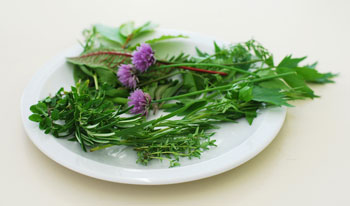
For example if you planted herbs earlier in the year as part of your acknowledgement of the Wheel of the Year, many of these will be begging to flower now. Crop them carefully, and dry what you will not now use so that you have a ready supply during the winter months. Similarly harvest your vegetables and fruit thoroughly, and store what you do not use now, in the spirit of gathering to see you and yours through winter.
When you do your cropping think carefully about which plants you will wish to grow again next year, and leave some plants specifically to go to seed, so that you can gather and store these to sow next year. You should do this on or around the Autumnal Equinox. Remember – your forebears did not have garden centres bristling with seed packets at their disposal.
In storing and forward planning you will be engaging much more strongly with this powerful cycle – and when you plant your stored seed next year and begin the process of rearing it, you affirm your affinity with age-old cycles.
If you choose to raise an altar, think about gathering some grasses which are beginning to seed from your garden or the surrounding area. Gather a couple of bunches of partially ripened berries. Look for things that encapsulate the concept of promise of coming bounty, and include these in your display. And do not forget a loaf of bread.
If you choose not to be this formal, then follow Graham’s guidance for a gathering of friends and relatives at which you serve food. Invite people to bring a contribution. As he says, shared food is central to the concept here.
